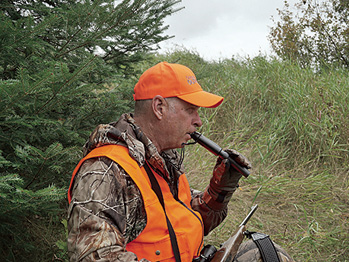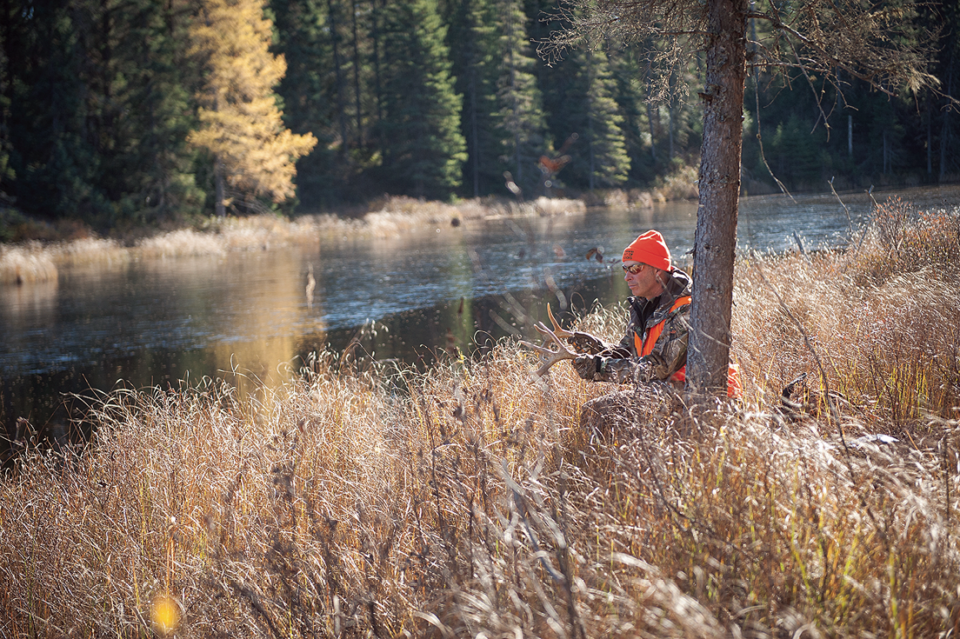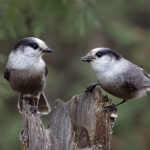When I began to hunt deer several decades ago, almost no one called or rattled—at least not in this northern region. You either pushed deer out of chunks of bush via what was called a “deer drive,” or you stalked them in the woods. It was sometime in the late ‘80s and early ‘90s when calling and rattling became popular. The great thing about both techniques is their effectiveness in the right situation. Here’s a look at calling and rattling, with tips on how to use them.
Rattling
The concept behind rattling is to mimic the sound of two male deer fighting. When male deer—called bucks—fight, it is generally over mating rights with a female deer, or doe. The bucks clash antlers and it makes a distinct sound that can really carry. When other bucks hear rattling antlers, they may be inspired to investigate. This curiosity creates a prime opportunity for the deer hunter.
You can copy the clashing sound of antlers in a couple of ways. The most common technique involves using what is called a rattle bag. The bag is composed of either plastic sticks or round, hard pieces of wood. By rolling the bag in your hands, the loud, clicking sound of bone antlers is approximated. Rattle bags come in different sizes, with larger bags usually being louder. One nice thing about rattle bags is they are portable and can be easily slipped into a jacket pocket.
The other method of rattling is to use actual deer antlers, or commercially made antler reproductions. These tend to be more cumbersome, but are very realistic sounding. You clash the two antlers together to create the rattling sound. I find smaller antlers are better for attracting bucks and can be slipped into a pack when not in use. However, some hunters like to use a large rack for rattling in hopes of attracting a dominant buck.
Rattling sequences should be short, with three or four clashes of the bag or antlers, followed by about 20 minutes or so of quiet. Generally, I’ll start with more subtle rattles, then pick up the volume over time. Bucks may come in running to rattling, but as often as not, they will sneak in quietly. Be ready.
Calling with Grunts and Bleats
Deer are surprisingly vocal animals, although you might not immediately recognize their sounds. Bucks make a variety of grunts when they are trying to attract does, or “talking” to other bucks. Does and fawns have several bleats that are used for communicating with each other and bucks. All deer can emit a loud warning snort or wheeze that can scare you nearly to death if you don’t expect to hear it—you don’t want to learn that call.
The grunt call is the most popular vocalization that modern deer hunters use. Most grunt calls are made by blowing air into a “grunt tube.” There are several grunt tubes on the market, but a few popular ones include the Phelps Alpha Pro Grunt, Illusion Extinguisher, and the Quaker Boy Brawler. Although these calls have slightly different sounds, they all work in a similar way. The tube has a reed, and that reed—with the help of the tube shape—creates a realistic grunt when you blow air through it. The sound is not unlike that of a pig and varies in timbre. Most buck grunts are short and staccato.

There is no bad time to call for deer, but the pre-rut and main rut periods are generally when bucks are most responsive to a grunt call. Usually, a few grunts, followed by a 20-minute wait, is the best way to go about hunting with a call. If you are hunting from a tree stand, the call sound will carry further, as long as it’s not too windy.
I like to use a grunt tube when I’m stalking deer through the woods. The grunt tube is a very portable call and can be carried around your neck and then tucked down your jacket. Although early to mid-November is a prime grunt call period, I’ve had bucks come out to grunts in early December. The grunt tube is a must have call for any serious buck hunter.
The bleat call is used to get the attention of bucks that are looking to mate with a doe. Bleat calls will also attract does that are curious or looking to join a herd. I’ve had great luck using bleat calls in farm country, where does are more numerous. However, bush bucks that ignore grunts and rattling seem more easily seduced by doe sounds.
The classic bleat call is made by using what’s called a “bleat can.” The can has holes in the top, and a single hole on the bottom. By putting your finger over the single hole, and then flipping the can over, it makes the short, pleading sound known as a bleat. There are also mouth calls that make a bleat sound, and bleats that require you squeeze a rubber end to make the sound. The squeeze bleat can be useful when you want to minimize movement.
Less is always more with calls, and this is especially true with bleats. Don’t overuse it. Let a couple bleats go, and then keep it quiet for a good 20-30 minutes. Keep your eyes peeled and listen for both answering bleats and grunts.
Rattling and calling is a unique part of deer hunting. Give these techniques a try this November when the air is cool and the bucks are frisky.





